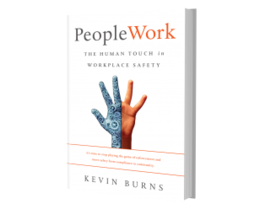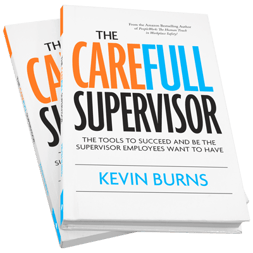Focus on the plan to improve the things you're not already doing. Not the goal.
Once upon a time, in the mid-90’s, I was working in a sales job. At the start of each month, our sales manager would assemble all the sales reps in a room and ask each of us for our specific sales goal for the month. He wasn't asking us what our plan was to make more sales. He was asking for a number.
So, we’d each make up a number. It wasn't really based on anything other than the boss liked to hear us setting goals that surpassed the previous month's performance. So, a number with a slight increase over last month usually did the trick. We'd each spit out our number and then, we would all go back to doing exactly whatever it was we did the previous months. Nothing changed.
This goal-setting exercise was dumb.
Goal setting like this in safety is dumb.
Announcing a goal but not shifting resources or improving support to achieve the goal is not goal-setting but goal-dreaming. You see, the goal isn't the important part of safety success. The plan is key. The step-by-step strategy is far more important than the goal you set. You need to focus on improving the plan.
Setting a goal of a 30% reduction in first aids isn’t the important part. The important part is how you're going to make that goal happen. The actual step by step approach. The specific things you're, each day, going to ask your people to do.
Look, with just a little dumb luck, you can hit a goal. But you can't repeat it because you don't know how you got there. So, while you're setting goals for safety performance, what's the plan that makes that goal happen?
Make it count in 4 key areas.
What are the specific things you are going to do each day in the following four key areas:
Management: How are you going to support the supervisors to ensure that front-line employees are executing the plan?
Meetings: Are you going to improve your safety meetings, not just to get people paying attention, but actively participating?
Marketing: Are the internal marketing and communications inspiring people to do better work, higher quality, greater teamwork and more of looking out for each other?
Motivation: Is morale and motivation high and are your supervisors equipped to keep it high so that your people can execute like real professionals?
 These are the four areas you have to ensure are addressed if you want to move from a numbered-goal to actualising those goals. You will find more on these four key areas as part of the M4 Method TM from my book PeopleWork: The Human Touch in Workplace Safety.
These are the four areas you have to ensure are addressed if you want to move from a numbered-goal to actualising those goals. You will find more on these four key areas as part of the M4 Method TM from my book PeopleWork: The Human Touch in Workplace Safety.
Focus on the plan to improve the things you're not already doing especially including how your people function as a team. Then build a specific day-by-day, step-by-step plan to get there.
Focus on THAT, not the goal at the end of the year.
--
Learn more strategies to create a high-participation safety culture. Put Kevin Burns' expertise to work in your organization. Whether it's for a one-day safety event or training/facilitation session, or perhaps Kevin's 90-Day Safety Accelerator program and the High-Participation Safety Culture Shift program. There is a program that can work for you, your front-line crews, your management team, your safety committee and your supervisors.
Kevin Burns is a management consultant, speaker/facilitator and author of PeopleWork: The Human Touch in Workplace Safety. Kevin's M4 Method TM will guide you to engage your people better in safety. The best place to work is always the safest place to work.
Get details and more information http://www.kevburns.com/contact


